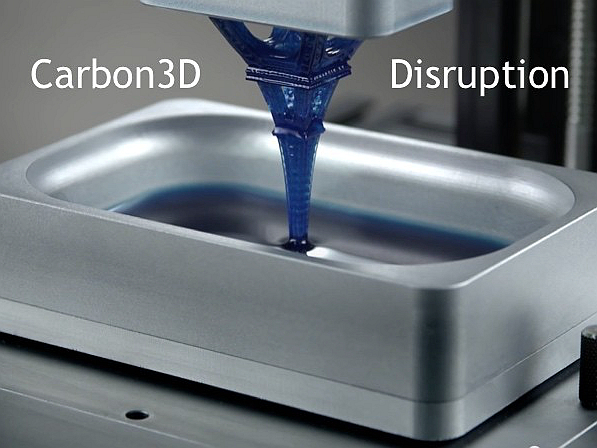What Is Continuous Liquid Interface Production (CLIP)?
Continuous Liquid Interface Production (CLIP) represents an innovative advancement in additive manufacturing, revolutionizing production efficiency and part quality. This blog delves deeply into the manufacturing process, materials, surface treatment, industry applications, and the advantages and limitations associated with CLIP technology.
Manufacturing Process
Continuous Liquid Interface Production (CLIP) is a unique 3D printing technology developed to overcome the speed limitations associated with traditional stereolithography (SLA). Unlike other methods that build parts layer-by-layer, CLIP harnesses the power of oxygen and UV light to form parts continuously.
The process begins with a CAD (Computer-Aided Design) model sliced into extremely fine cross-sections. In CLIP printing, an oxygen-permeable window at the bottom of the resin vat creates a "dead zone," where photopolymerization cannot occur due to oxygen inhibition. Above this oxygen-rich zone, UV light selectively cures the resin, forming the desired object continuously and seamlessly as the build platform moves upward without stopping between layers.
This revolutionary technique dramatically accelerates production speeds and yields smooth, isotropic parts without distinct layering.
Materials
CLIP technology primarily utilizes photopolymer resins specially engineered to leverage the unique aspects of the process. Material types include:
Rigid Polyurethane (RPU): Durable, stiff, and suitable for mechanical components and housings.
Flexible Polyurethane (FPU): Offers flexibility and toughness, ideal for impact-resistant applications.
Elastomeric Polyurethane (EPU): Highly elastic, providing exceptional performance in cushioning, sealing, and flexible applications.
Cyanate Ester (CE): Heat-resistant, designed for high-performance applications in electronics and automotive industries.
Epoxy-Based Resins: Ideal for structural and industrial-grade components requiring strength and heat stability.
Selecting the correct resin formulation is crucial to achieving desired mechanical properties and functional performance.
Surface Treatment
CLIP-produced components often exhibit smooth finishes directly from the printer. However, further surface treatments may be necessary depending on application needs:
Post-Curing: Enhances final mechanical properties, ensuring complete polymerization and improved stability.
Sanding and Polishing: Provides aesthetic enhancement by removing minor imperfections and improving surface smoothness.
Painting and Coating: Offers protection and customizable aesthetic appeal, enhancing durability and functionality.
Chemical Treatment: Specialized chemical surface treatments can improve bonding characteristics for subsequent adhesive bonding or coating.
Effective surface treatments significantly enhance the end-use qualities of CLIP-produced parts.
Industry Application
CLIP technology's exceptional speed, accuracy, and material versatility make it widely beneficial across several industries:
Healthcare and Dental: Rapid production of dental prosthetics, surgical guides, medical device prototypes, and customized healthcare solutions.
Automotive: Efficient production of prototypes, customized interior and functional components, and tooling fixtures.
Consumer Goods: Quick turnaround of complex product prototypes, packaging, footwear components, and household items.
Aerospace: Manufacturing of lightweight structural components, aerodynamic parts, and rapid prototyping for critical applications.
Electronics: Production of precision components, functional prototypes, and customized housings that require fine detail and structural integrity.
Advantages and Limitations
Advantages:
High-Speed Production: Significant improvement in print speed compared to traditional layer-by-layer technologies.
Superior Surface Finish: Parts produced have smoother surfaces and higher isotropy, requiring less post-processing.
Material Versatility: A wide range of high-performance resins supports diverse industrial applications.
Continuous Manufacturing Capability: Enables seamless and efficient production, significantly reducing lead times.
Limitations:
Cost of Equipment: Higher initial investment costs for CLIP printers compared to traditional 3D printing technologies.
Material Cost: Specialized resins required for CLIP technology can be more expensive.
Size Restrictions: Limited build volume can constrain the production of larger components.
Technical Expertise: Requires skilled personnel to handle sophisticated equipment and manage the unique manufacturing process.
Awareness of these pros and cons enables effective decision-making when integrating CLIP technology into production workflows.
FAQs
How does CLIP technology compare to traditional stereolithography (SLA)?
What kind of maintenance is required for CLIP 3D printers?
Can CLIP-printed parts replace traditionally manufactured components?
What is the typical lifespan of parts produced by CLIP?
Are CLIP-produced parts suitable for high-temperature applications?

